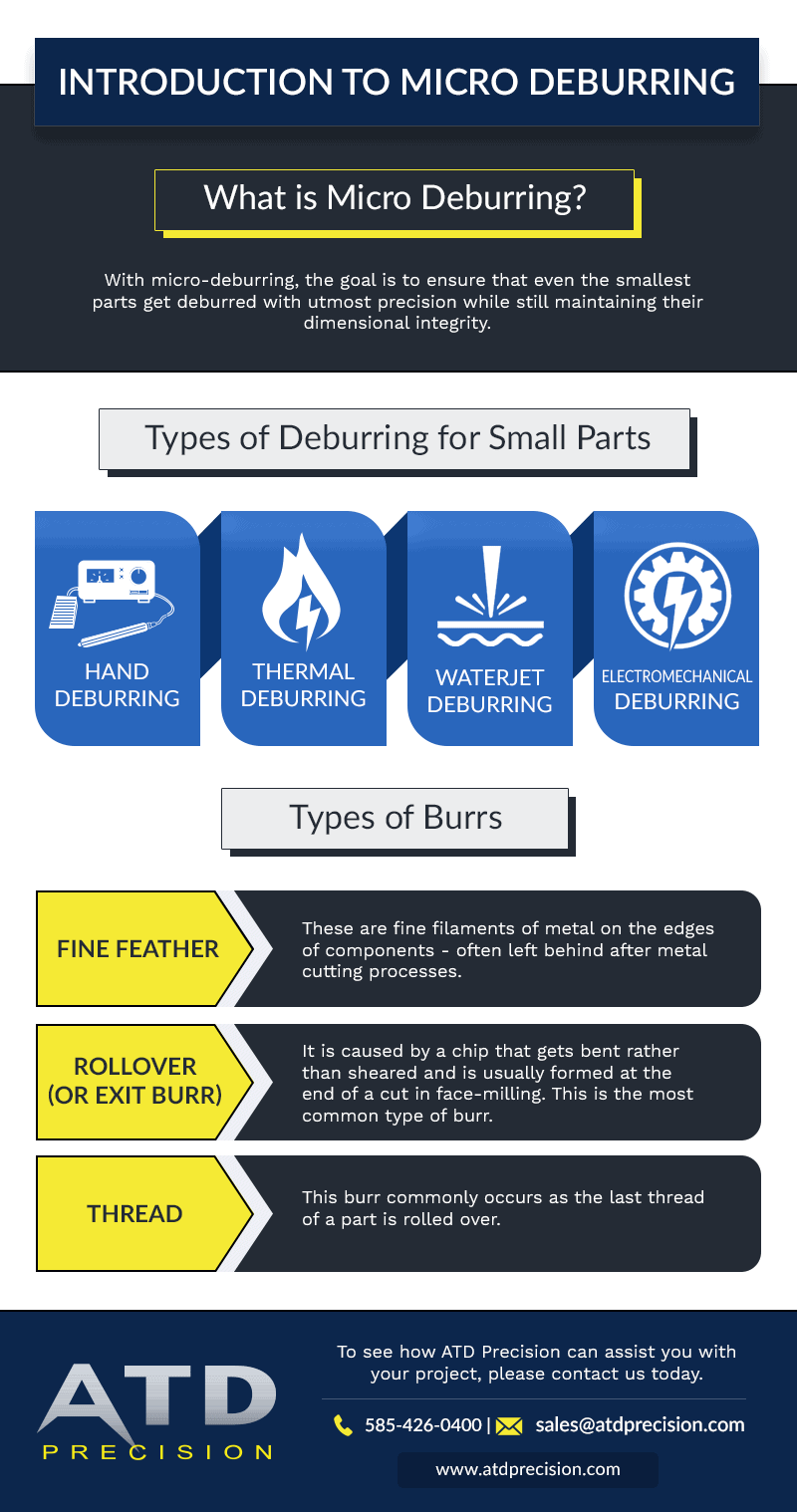At ATD Precision, our clients demand precision parts that will meet their unique performance needs. To this end, micro-deburring has increased in importance over the past 50 years due to the small size and limited mass of today’s micro-sized parts.
What is Deburring?
The process of machining can sometimes result in burrs, those slightly raised edges or small pieces of material that remain attached to the part after fabrication. They appear naturally during many machining processes including stamping, sintering, milling, engraving, and cutting. These burrs can be unsightly but, more importantly, they sometimes also affect the safety and overall functionality of the part. In the case of precision parts, this can lead to critical failure. Deburring removes the burrs to provide a pristine, smooth, quality component.
What is Micro-Deburring?
Deburring can be quite forceful on larger components, but deburring small parts raises the process to a level of pinpoint accuracy. With micro-deburring, the goal is to ensure that even the smallest parts get deburred with utmost precision while still maintaining their dimensional integrity. Each part is handled separately utilizing specialized tools. After deburring, the individual parts undergo a visual inspection process under high-powered magnification to assure the desired results have been achieved and remain within necessary tolerances.
Types of Deburring for Small Parts
There are several methods for micro-deburring parts, including:
- Hand deburring. Although there are multiple ways to deburr small parts, ATD specializes in hand deburring. Our skilled technicians use a variety of delicate processes to meticulously remove burrs under a high-resolution microscope. We accomplish this by hand lapping, hand polishing, applying very small brushes and tools, or using polishing wheels.
- Thermal deburring. This process utilizes an explosive gas mixture to create thermal energy which burns off the burrs. It is most often used for removing hard-to-reach burrs in cracks or crevices, or for removing burrs on multiple surfaces simultaneously.
- Waterjet deburring. A highly focused and sufficiently pressurized stream of water can remove burrs and rough edges. Removed material gets washed away by the jet, so no contaminating debris remains. The water jet deburring process is better suited for components with lower tolerances.
- Electromechanical deburring. Electromechanical deburring may be used in some cases involving extremely difficult materials. A combination of electricity and a salt or glycol solution dissolves the burrs without adversely impacting the surrounding material.
Industries That Benefit From Micro Deburring
The degree of precision, time required, and deburring method all depend largely on the final application of the part in question. Standard mechanical deburring processes are sufficient, but in certain industries, such as aerospace, lack of precision during the deburring process can leave unwanted debris that can cause catastrophic failures. Due to a need for high-performance precision parts, industries that often benefit from micro-deburring include:
- Fluid control products
- Motion control
- Valve and actuators
- Aerospace components
ATD – Specialists in Micro Deburring for Small Parts
Located in Rochester, New York, ATD Precision has been manufacturing complex precision-machined components and assemblies since 1968. We are the ideal partner for all your micro-deburring needs. Our skilled deburring specialists use exacting techniques to remove the following types of burrs:
- Fine feather. These are fine filaments of metal on the edges of components. They are most often left behind after metal cutting processes.
- Rollover. Also known as an exit burr, this is the most common type of burr. It is caused by a chip that gets bent rather than sheared and is usually formed at the end of a cut in face-milling.
- Thread. This burr commonly occurs as the last thread of a part is rolled over.
Our 45,000-square-foot manufacturing facility contains state-of-the-art micro-deburring technology and a variety of other advanced fabrication and machining equipment, enabling us to provide complex solutions of the highest quality at a competitive price. To see how ATD Precision can assist you with your project, please contact us today.
